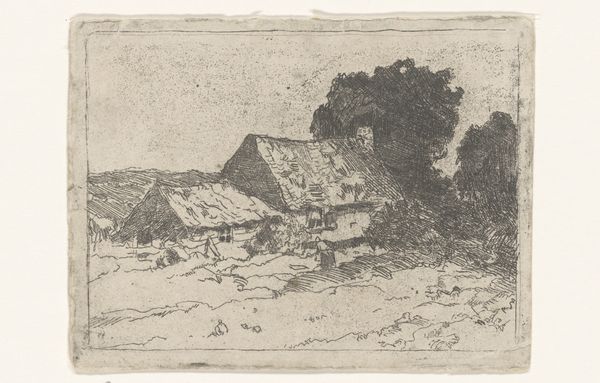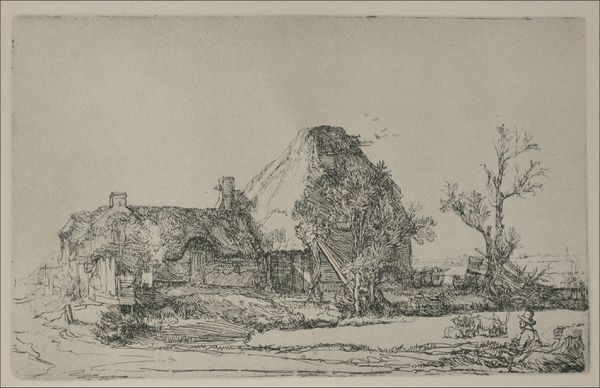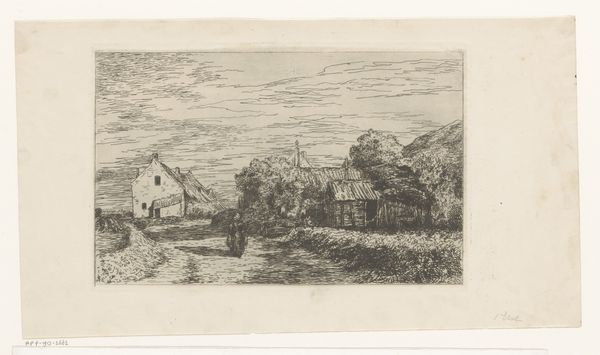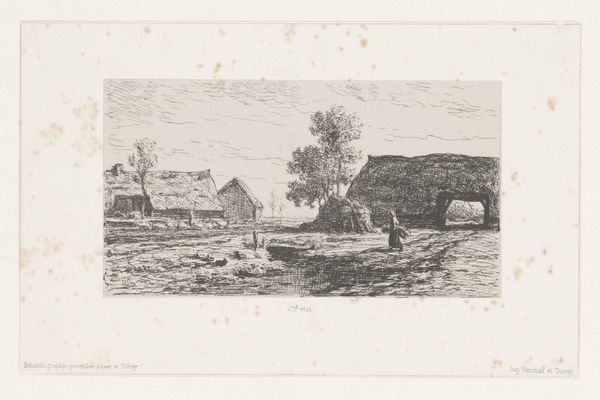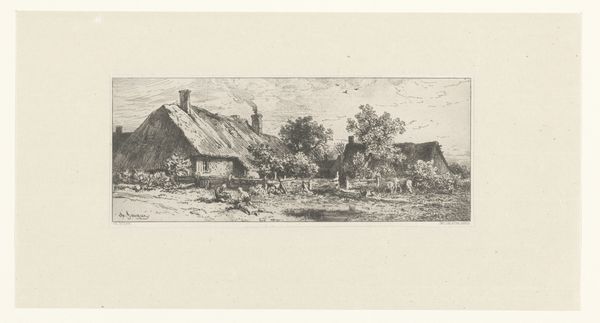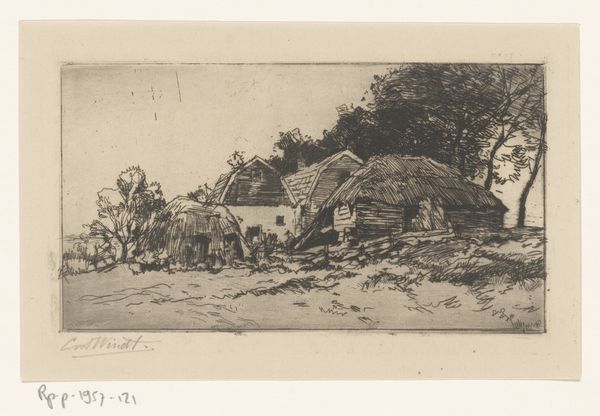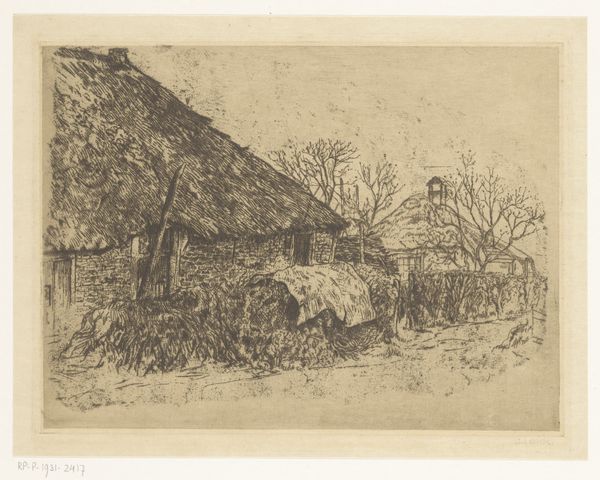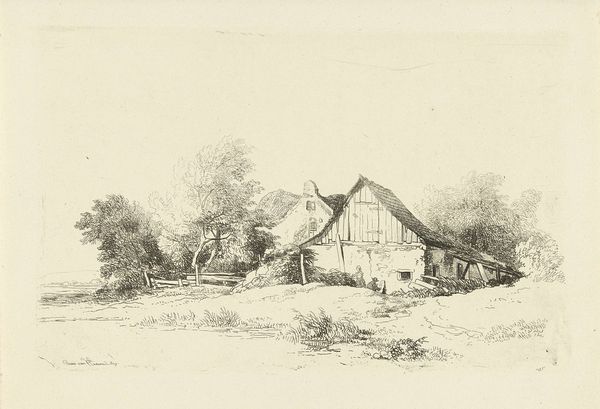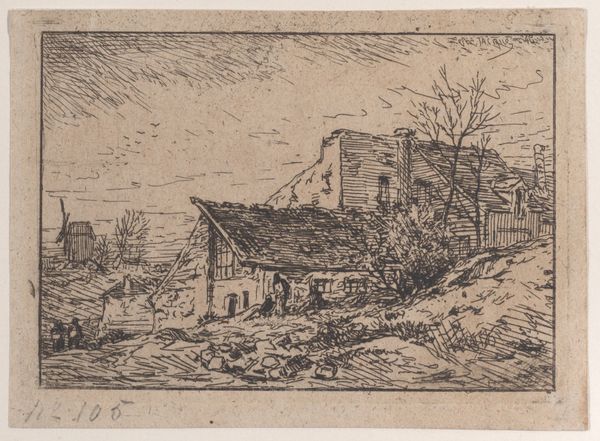
drawing, print, etching, paper
#
drawing
#
dutch-golden-age
# print
#
etching
#
landscape
#
paper
Dimensions: height 75 mm, width 102 mm
Copyright: Rijks Museum: Open Domain
Curator: This etching, rendered on paper, captures a farmstead nestled within a hilly terrain. The piece is titled “Boerderij in heuvelachtig landschap,” translating to "Farm in Hilly Landscape." Its creation is credited to Chris van der Windt, dated sometime between 1887 and 1952, and now resides here at the Rijksmuseum. Editor: You know, it whispers "seclusion" to me. The stark contrasts in the hatching create such a somber, almost mysterious mood. A lone farm house standing guard, and yet feeling totally enveloped. It is beautiful and terrifying, like a dream within a dream. Curator: It’s an interesting observation! Given the period and the prevalence of similar subjects, landscapes such as this provided a sense of national pride and stability, representing the working lives of rural communities. They highlighted labor and land as symbols of belonging in a rapidly changing world. It is more likely about belonging than seclusion. Editor: Perhaps. But what about the starkness of the medium? The intentional contrast—a sort of hyper-realism in its lack of colour. To me, that isn't so much a symbol of pride but of a simpler and bleaker version of human experience. Curator: While your perception is valuable, especially regarding the emotional tone evoked, the medium itself had more practical considerations. Etchings and other forms of prints were very democratic. It means it could be accessible and appeal to a wider, popular audience, allowing these images to circulate more easily within society and thus reinforcing values. Editor: Still, you cannot deny that sense of… vulnerability in that lone little farm. That single point on the ground with nothing else to count on. Like so many artists who have felt vulnerable on many little points scattered on this wild thing that we call home! But enough feeling. It does feel good that the artist made the place immortal! Curator: In some ways it certainly is! It offers insight into a society at the turn of the century and beyond, reflecting enduring themes such as land ownership, industrialization, and our innate desire for belonging within shifting cultural narratives. Thanks to its public accessibility, this image allows us to better study such shifts. Editor: Thank you, friend. That puts things into perspective!
Comments
No comments
Be the first to comment and join the conversation on the ultimate creative platform.
